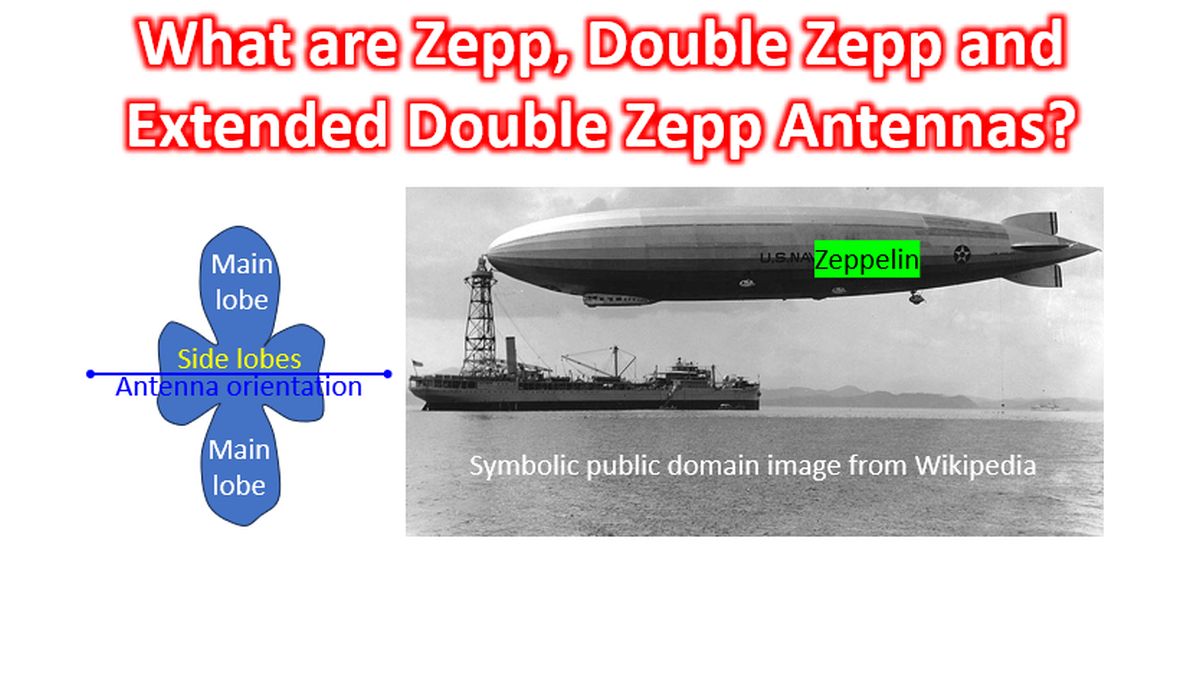What are Zepp, Double Zepp and Extended Double Zepp Antennas?
Zepp is short form for Zeppelin and is a resonant antenna end fed by a ladder line. The name comes from Zeppelin which was a type of rigid airship named after the German inventor Ferdinand von Zeppelin. Zeppelin antennas were wire antennas that could be trailed behind the Zeppelin airship. As they were trailed antennas they were used in end fed configuration. Double Zepp is a center fed half wavelength antenna. Double extended Zepp antenna consists of two collinear 0.64 wavelength elements fed in phase. It has a gain of 3 dB over a dipole along the main lobe which is perpendicular to the direction of the elements. There are also side lobes along the direction of the elements which are not good enough to give signficant gain. According to N6LF, main lobes have significant gain only for an angle of about 35 degrees.

Double extended Zepp antenna can be considered as a 1.25 wavelength long wire, fed at the center with an open wire transmission line and a tuner at the transmitter end. It has been recommended that coaxial cables are not the type of feeder to be used for a double extended Zepp antenna. Feedline impedance expected is 450 – 600 Ohms and not the 50 Ohms of the typical coax used in amateur radio. It is important to have the feedline at right angles to the antenna for at least a quarter wavelength to prevent current imbalance in the feedline caused by pick of RF from the antenna. Feedline length should not be exact quarter wavelength or even multiples of it. Double extended Zepp antenna has multi-band capability when used with an antenna tuner. A 40 meter double extended Zepp antenna behaves as a dipole on 80 m and like a long wire antenna on higher frequency bands.